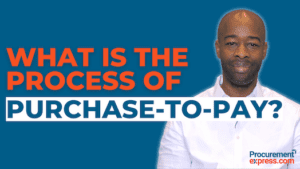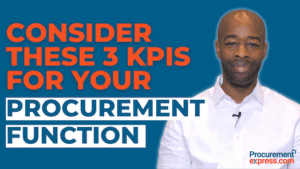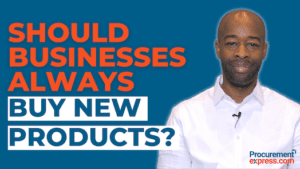In today’s video, Kala Dikibo discusses why procurement is important to businesses of all shapes and sizes.
As experts in the procurement industry, we know exactly just how important procurement is to an organization and its success. Both in the short and long term. But there’s more to Procurement than just getting you what you need to provide your product or service.
If you want to learn more about how Procurement benefits your business, in this article we’ll go over its benefits. From its general role in procuring what you need, to more specific perks it can bring you.
What is the Role of Procurement?
If we strip down the idea of procurement to its core it would be that it’s the act of obtaining goods and/or services for business purposes. In other words, they ensure that the company is getting what it needs to do the job.
Procurement is directly intertwined with your supply chain management, although they are not quite the same thing. Procurement also works with your supplier relations, your overall business strategies and objectives, and even your brand.
How does it do all that? By carefully vetting your suppliers and finding exactly what you need to achieve your goals.
How Can Procurement Support My Business?
Regardless of what they do, all businesses have one core objective: to be profitable. In that regard, procurement has multiple ways to help you. Let’s take a look:
Procurement can help you cut costs
Procurement is, first and foremost, about finding the best suppliers and getting you the best prices. This could be through a change in your current supplier, renegotiating a contract for better terms, or finding ways to acquire discounts for your purchases. This is the bread and butter of procurement. It goes without saying that reducing your costs will ultimately increase your profit margins.
Procurement can support and enhance your brand
More than just focusing on cost, procurement also has an interest in helping you achieve your organization’s strategy. If your strategy is having a low-cost product, procurement can help you find the suppliers that allow you to achieve that. The same applies if you want to deliver a high-quality product. Procurement is all about finding the suppliers that align with your organization’s goals.
Procurement reduces risks and helps you grow
For your business to thrive, a healthy flow of your needed goods is necessary. Disruptions in your supply chain can have devastating consequences. Procurement helps reduce that risk by carefully examining and vetting any potential suppliers. They look into their history to ensure that the supplier can handle your requests, and that should an issue arise they’ll be able to navigate it.
Other ways Procurement can help your business
In its quest for the perfect supplier, procurement looks into all aspects of a candidate. This includes elements of corporate social responsibility, such as environmental policies and sustainability concerns.
If your brand places a big emphasis on being ethical or environmentally friendly, you’d want to ensure that all materials and services you source come from suppliers that uphold those same values, or you risk damaging your image.
Not only that, but procurement can also help you avoid suppliers that have issues with corruption, child labor, or other unsavory elements.
Conclusion
The importance of Procurement for an organization cannot be understated. Without a procurement department and process, there is no product or service to provide. Here at Procurement Express, we pride ourselves on providing you with the tools you need to make your procurement process more effective.
If you’d like to learn more about procurement in general, check out our educational resources. And if you’d like to upgrade your procurement process, reach out to us today.




